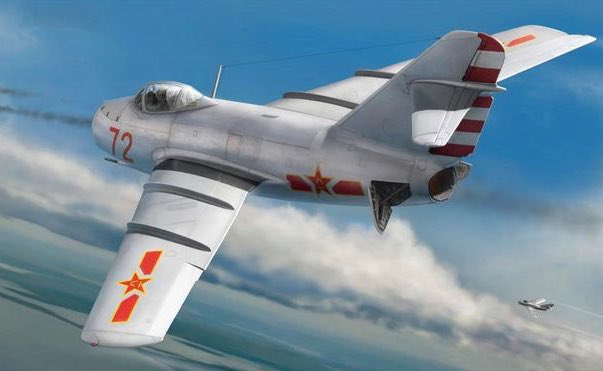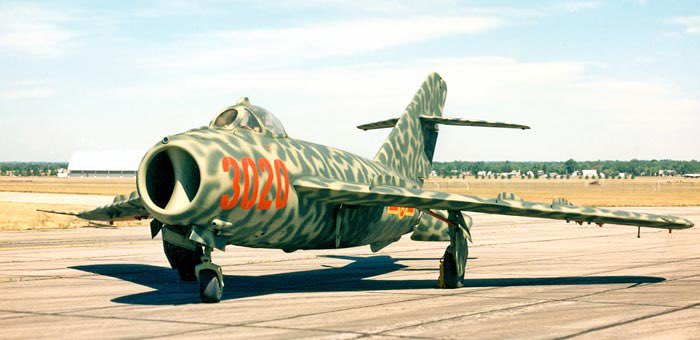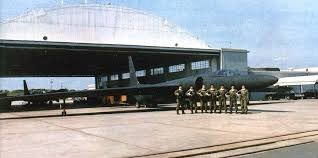Almost 34 years before Operation Bandar, Soviets launched a similar strike deep inside Pakistan to destroy a major Mujahideen camp during the Soviet Afghan War.
The aircraft used for this operation was a Sukhoi Su-25 Frogfoot. Let me tell y’all a bit about it.
#Thread
The aircraft used for this operation was a Sukhoi Su-25 Frogfoot. Let me tell y’all a bit about it.
#Thread

But first a little bit of background.
After more than seven years of fighting, Mujahideen resistance against the Soviet troops only grew more stronger, thanks to direct support from the USA & Pakistan.
Most of the training camps were operated across the border in Pakistan.
After more than seven years of fighting, Mujahideen resistance against the Soviet troops only grew more stronger, thanks to direct support from the USA & Pakistan.
Most of the training camps were operated across the border in Pakistan.

Since 1979, Afghan Air Force (DRAAF) launched several air strikes on these training & refugee camps in retaliation.
To counter these raids, PAF at the time deployed J-6 fighters (Chinese-built MiG-19 clones) capable of Mach 1 & two radars.
It was not enough.



To counter these raids, PAF at the time deployed J-6 fighters (Chinese-built MiG-19 clones) capable of Mach 1 & two radars.
It was not enough.




In 1981, Pakistani despot General Zia managed to persuade the Reagan administration to sell forty F-16As & two-seat F-16Bs, which were received between 1983-1986.
F-16s gave PAF a huge qualitative edge over the DRAAF. Soon the cross border air strikes reduced.
F-16s gave PAF a huge qualitative edge over the DRAAF. Soon the cross border air strikes reduced.

On May 17, 1986 two F-16As were vectored towards two DRAAF Su-22M3K penetrating Pakistani airspace near Parachinar.
Both Fitters were shot down as per PAF accounts. However, DRAAF confirmed loss of only one aircraft.
However this greatly reduced cross border raids by Afghans
Both Fitters were shot down as per PAF accounts. However, DRAAF confirmed loss of only one aircraft.
However this greatly reduced cross border raids by Afghans

By 1986, Soviets records indicate that Pakistani fighters had begun roaming into Afghan airspace.
They would harass efforts to provide aerial resupply to besieged garrisons like in Khost, only ten miles across the border.
Soviet deployed MiG-23MLDs to protect Afghan Su-22s.



They would harass efforts to provide aerial resupply to besieged garrisons like in Khost, only ten miles across the border.
Soviet deployed MiG-23MLDs to protect Afghan Su-22s.




Soviets decided to raise the bar and attack a massive Mujahideen training & re-supply camp deep inside Pakistan.
This previously undisclosed and clandestine mission by Soviet Su-25s was revealed by then Captain Alexander Koshkin in his memoirs Shturmovik, published in 2012.
This previously undisclosed and clandestine mission by Soviet Su-25s was revealed by then Captain Alexander Koshkin in his memoirs Shturmovik, published in 2012.

A little bit about the aircraft.
Frogfoot was Soviet answer to USA’s A-10 Warthogs. Known as Grach in USSR, this rugged subsonic twin engined jet was developed to provide CAS to Soviet ground forces.
Frogfoot was Soviet answer to USA’s A-10 Warthogs. Known as Grach in USSR, this rugged subsonic twin engined jet was developed to provide CAS to Soviet ground forces.

In 1981, 200th Independent Attack Squadron & its Su-25s became the first Grach units to be deployed in Afghanistan.
Over the course of the decade long conflict, Su-25s performed considerably higher number of sorties than that of any other Soviet combat aircraft in Afghanistan.
Over the course of the decade long conflict, Su-25s performed considerably higher number of sorties than that of any other Soviet combat aircraft in Afghanistan.

The advent of the Su-25 in Afghanistan expanded the scope of operations by Soviet ground commanders who could now insert their troops deeper into guerrilla territory with better air cover.
The Mujahideen grew to fear and respect the Su-25 as the war grew on.

The Mujahideen grew to fear and respect the Su-25 as the war grew on.


On November 1986, at dawn, Soviets launched a daring strike near Peshawar.
It was decided to launch the strike at dawn to have sufficient visibility to penetrate Pakistani airspace at ultra-low level and strike the target using the element of surprise.
It was decided to launch the strike at dawn to have sufficient visibility to penetrate Pakistani airspace at ultra-low level and strike the target using the element of surprise.

A formation of four Su-25s, led by then Capt Koshkin, departed Bagram Airbase.
They were flying at speed of 310 mph & maintained a tight formation to simulate a single transport aircraft to radar operators of PAF early-warning radars across the border.
They were flying at speed of 310 mph & maintained a tight formation to simulate a single transport aircraft to radar operators of PAF early-warning radars across the border.

The formation simulated a landing approach of a transport aircraft to Jalalabad airfield near the the border with Pakistan.
At that moment one of the Su-25s split from the group, continuing to simulate a transport aircraft in a holding pattern over the Surubi Dam.
At that moment one of the Su-25s split from the group, continuing to simulate a transport aircraft in a holding pattern over the Surubi Dam.

The remaining three jets kept flying at low level, invisible to Pakistani early-warning radars. They flew nap of the earth and crossed the border.
From there, they proceeded at 160 ft towards the target.
From there, they proceeded at 160 ft towards the target.

As per plan, Primary targets were the barracks, to inflict as many casualties to Mujahideen as possible.
Secondary targets were ammunition warehouses, garages, fuel tanks, electrical equipment & vehicles.
Secondary targets were ammunition warehouses, garages, fuel tanks, electrical equipment & vehicles.

The ‘Frogfoots’ managed to approach the camp near Peshawar undetected & attacked with complete surprise, making four passes each.
Two bombing runs were made, followed by a single rocket pass and finally, a strafing pass with built-in 30 mm cannon.

Two bombing runs were made, followed by a single rocket pass and finally, a strafing pass with built-in 30 mm cannon.


No anti-aircraft fire from the
ground was encountered, & all three Su-25s returned to Afghan airspace at ultra-low level well before the PAF fighters could be scrambled.
The camp was completely obliterated & massive casualties were inflicted upon the rebels.
ground was encountered, & all three Su-25s returned to Afghan airspace at ultra-low level well before the PAF fighters could be scrambled.
The camp was completely obliterated & massive casualties were inflicted upon the rebels.

Frogfoots continued to launch such attacks throughout the entire conflict.
Growling Sidewinder made a great video on Su-25’s role in Soviet- Afghan war. I highly recommend it if you are interested in this topic. Here is the link-
Growling Sidewinder made a great video on Su-25’s role in Soviet- Afghan war. I highly recommend it if you are interested in this topic. Here is the link-
@Beastthesilent1 @Norse_Codee @BlackIAdder @Spadex716i @Demonknight0119 @desertscorp10 @DfIlite @Red1930327991 @STK7000 @romainvictaxiv @mountain_rats @OjasviSikarwar @80triph @TrisonicFoxbat @Akif747
“Aircraft used for this operation was the* Sukhoi Su-25 Frogfoot”
• • •
Missing some Tweet in this thread? You can try to
force a refresh






















